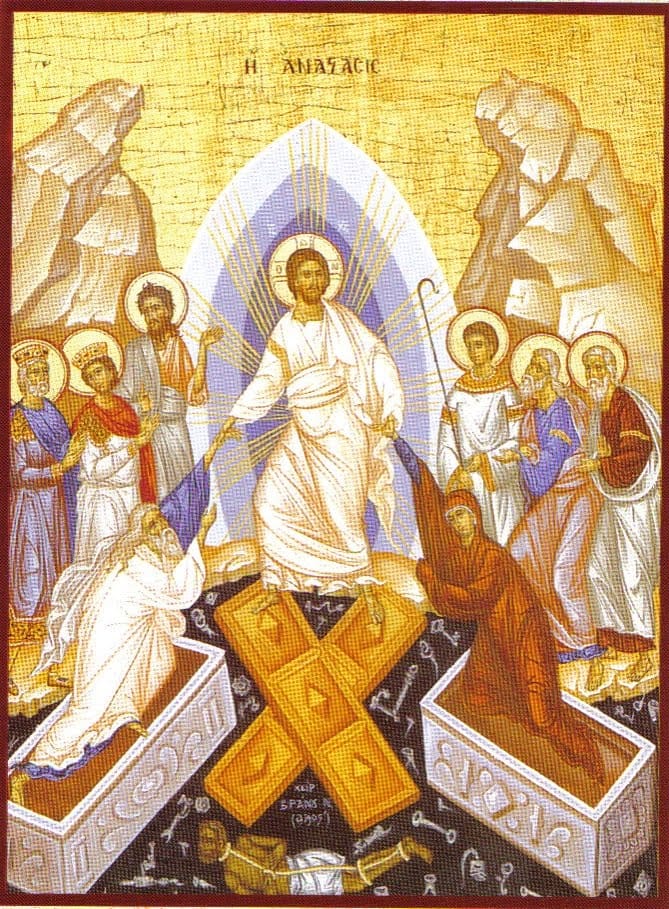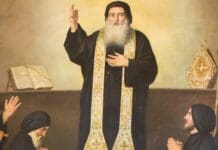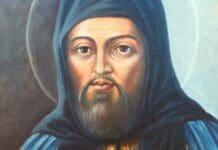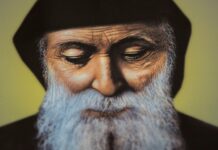By Phillip Rolfes
I remember the first time I walked into an Eastern Catholic (Byzantine) chapel.
I was a student at Franciscan University of Steubenville, and was spending a semester abroad at our sister-campus in Gaming, Austria.
The International Theological Institute (ITI) and the Language and Catechetical Institute (LCI), both of which boasted numerous students from Eastern Europe, shared a campus with us. To my surprise and confusion, however, they didn’t share a chapel with us.
Since a good number of the students at the ITI and the LCI were Eastern-Byzantine Catholics (along with some Orthodox), they had their own chapel that was specifically set up for their liturgical celebrations.
I loved that chapel, and spent more time praying in there than I did in Franciscan’s Perpetual Adoration chapel—even though I never attended a Divine Liturgy there (I didn’t understand that they were Catholic and I could participate in their “Mass” and fulfill my “Sunday Obligation” with them).
There was something about the iconography that drew me in.
The icons were literally hand-painted by a seminarian onto the walls from the floor to the ceiling, and they held an attraction for me that I just couldn’t shake.
Sadly, I’d have to wait for several years before getting a proper introduction to iconography and the methods for properly interpreting icons.
But we’ll get to that in the next post…
The Role of Icons
For Eastern Christians, iconography is more than just “religious art.” In fact, it’d be more proper to speak of iconography as a sacramental-liturgical art. They are our theology-in-color. If you want to know what we believe, look at our icons! It’s all there… for those who have the eyes to see.
Icons permeate the lives of Eastern Christians through our liturgies and liturgical environment. And they’re essential to our spirituality and spiritual traditions outside of the church building.
We use them in processions on various feast days. Priests bless their congregations with icons, similar to how Roman priests bless their congregations with the Eucharist in a monstrance. We have an icon for each of the Great Feasts of the Church’s liturgical year, giving us vivid imagery for the main themes of the feast. Our sanctuaries are often separated off by an “icon screen” known as the iconostasis. And many homes have an “icon corner” similar to the home altars that were once popular in Roman Catholic piety.
Because of the fact that icons are theology-in-color and they play such a key liturgical role, there are specific rules that govern iconography—the painting of icons—and the themes of iconography are drawn from our liturgical calendar(s), liturgical texts, and their related passages in the Scriptures.
As I would later learn, in order to fully understand an icon and its theology, you have to first know how to look at an icon, then you have to know how to interpret it with the Bible in one hand and the liturgical texts in the other.
We’ll go into that more in the next post. But first…
A Necessary Caveat…
I mentioned a couple of times above that icons are painted, and that there is a proper method for looking at and interpreting icons. But I feel it’s necessary to clear up a common misconception.
Many Roman Catholics, Eastern Catholics, and even Eastern Orthodox in the U.S. speak of “writing” and “reading” icons. But this is a pious misconception.
Icons, properly speaking, aren’t “written.” They’re painted. The misconception that icons are “written” is based off of bad etymology of the Greek word eikonographia, and is a phrase that’s unique to English-speaking Eastern Christians. Since these articles are about how to look at and interpret icons, I’ll refer you to this article by Dr. John Yiannias for more details about the etymology of eikonographia.
This idea that icons are “written” further lead to the understanding that they aren’t looked at and interpreted within their liturgical context, but “read” in much the same way that one would read a book. But as we’ll see, icons aren’t self-contained theological tomes. They have a proper context for interpretation.
In the next post we’re going to dive a little more deeply into the methods for interpreting icons. I’m going to use the famous icon of the “Harrowing of Hell” to walk us through those methods. Hopefully by the end of this short series, you’ll feel equipped to look at the icons of the various feast days, interpret them, and allow their theology-in-color to draw you deeper into the mysteries we celebrate throughout the liturgical year.

 Phillip Rolfes is That Eastern Catholic Guy. A “canonical convert” from Roman Catholicism to Maronite Catholicism, Phillip loves researching and sharing the rich traditions of the Christian East. He lives in Cincinnati, OH. with his wife and four children, and is parishioner at St. Anthony of Padua Maronite Catholic Church.
Phillip Rolfes is That Eastern Catholic Guy. A “canonical convert” from Roman Catholicism to Maronite Catholicism, Phillip loves researching and sharing the rich traditions of the Christian East. He lives in Cincinnati, OH. with his wife and four children, and is parishioner at St. Anthony of Padua Maronite Catholic Church.


















Make 6150 bucks every month… Start doing online computer-based work through our website. I have been working from home for 4 years now and I love it. I don’t have a boss standing over my shoulder and I make my own hours. The tips below are very informative and anyone currently working from home or planning to in the future could use this website……… Details Here
Deer bucks
Goat bucks
Rabbit bucks
Which is it? We need to know.
St. Joseph, terror of demons, cleanse this site from insensitive mischievous abuse. Amen.
St. Jean-Baptiste-Marie Vianney, pray for us.
St. Louis-Marie de Montfort, pray for us.